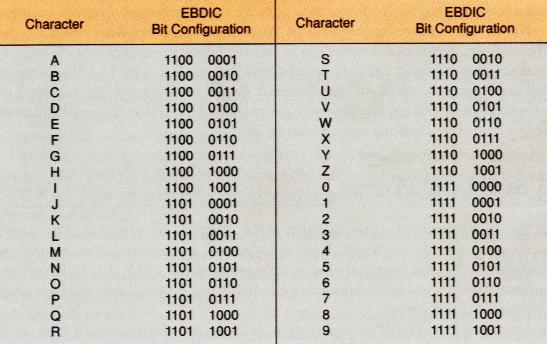

The American Standard Code for Information Interchange (ASCII) is a seven-bit code developed cooperatively by several computer manufacturers who wanted to develop a standard code for all computers. Because certain machines are designed to accept eight-bit rather than seven-bit code patterns, an eight-bit version of ASCII, called ASCII-8, was created. ASCII-8 and EBCDIC are similar, the key difference between them being in the bit patterns used to represent certain characters.
As described earlier, a fixed number of adjacent bits operated on as a unit is called a byte. Usually, one alphabetic character or two numeric characters are represented in one byte. Since eight bits are usually sufficient to represent a character, eight-bit groupings are basic units of memory. In computers that accept eight-bit characters, then, a byte is a group of eight adjacent bits. When large amounts of memory are described, the symbol K for kilobyte) is often used. Generally, one K equals 1,024 (2 to the power of 10) units. Thus, a computer that has 256K bytes of memory can store 256 x 1,024, or 262,144 characters.